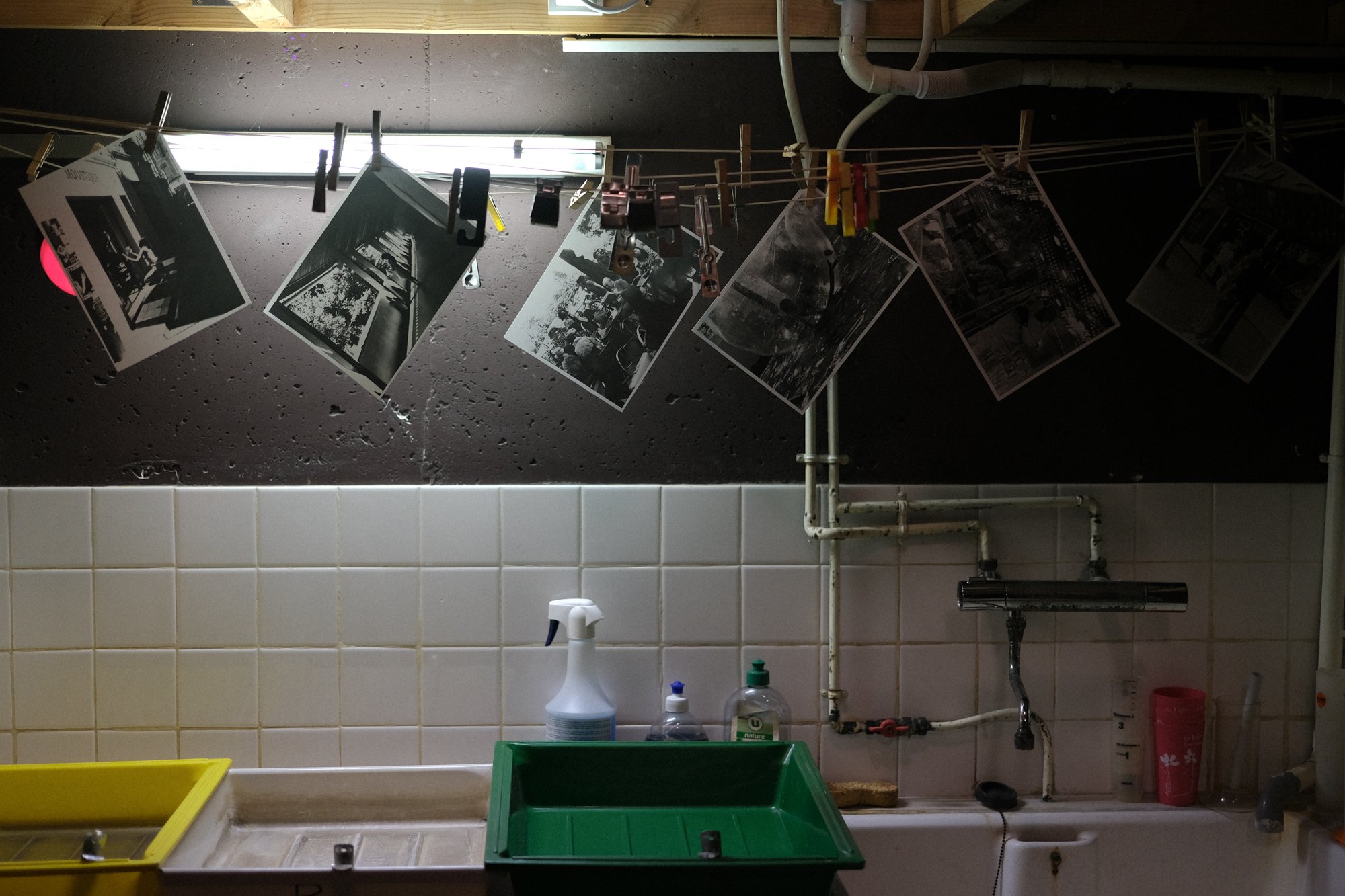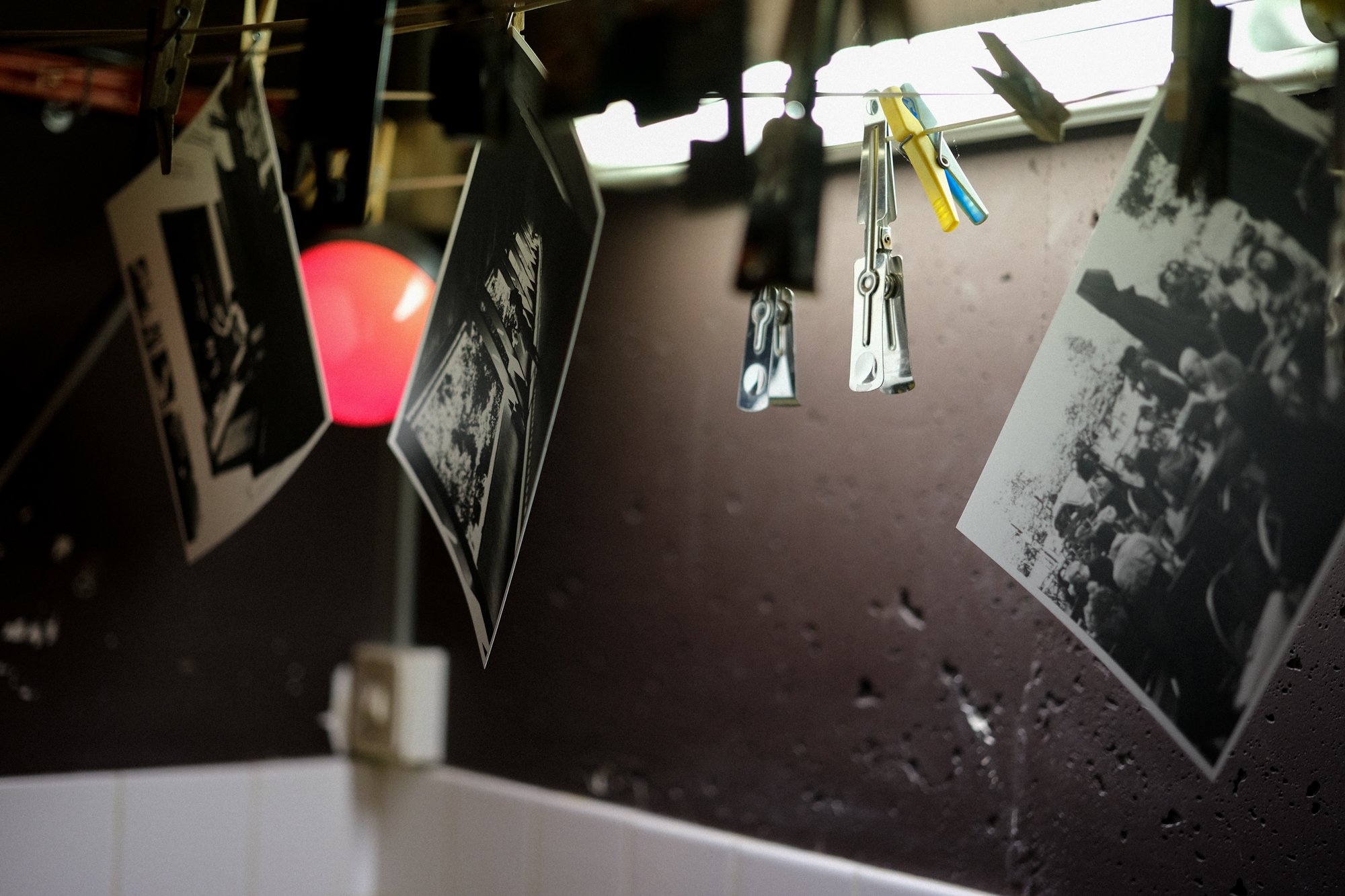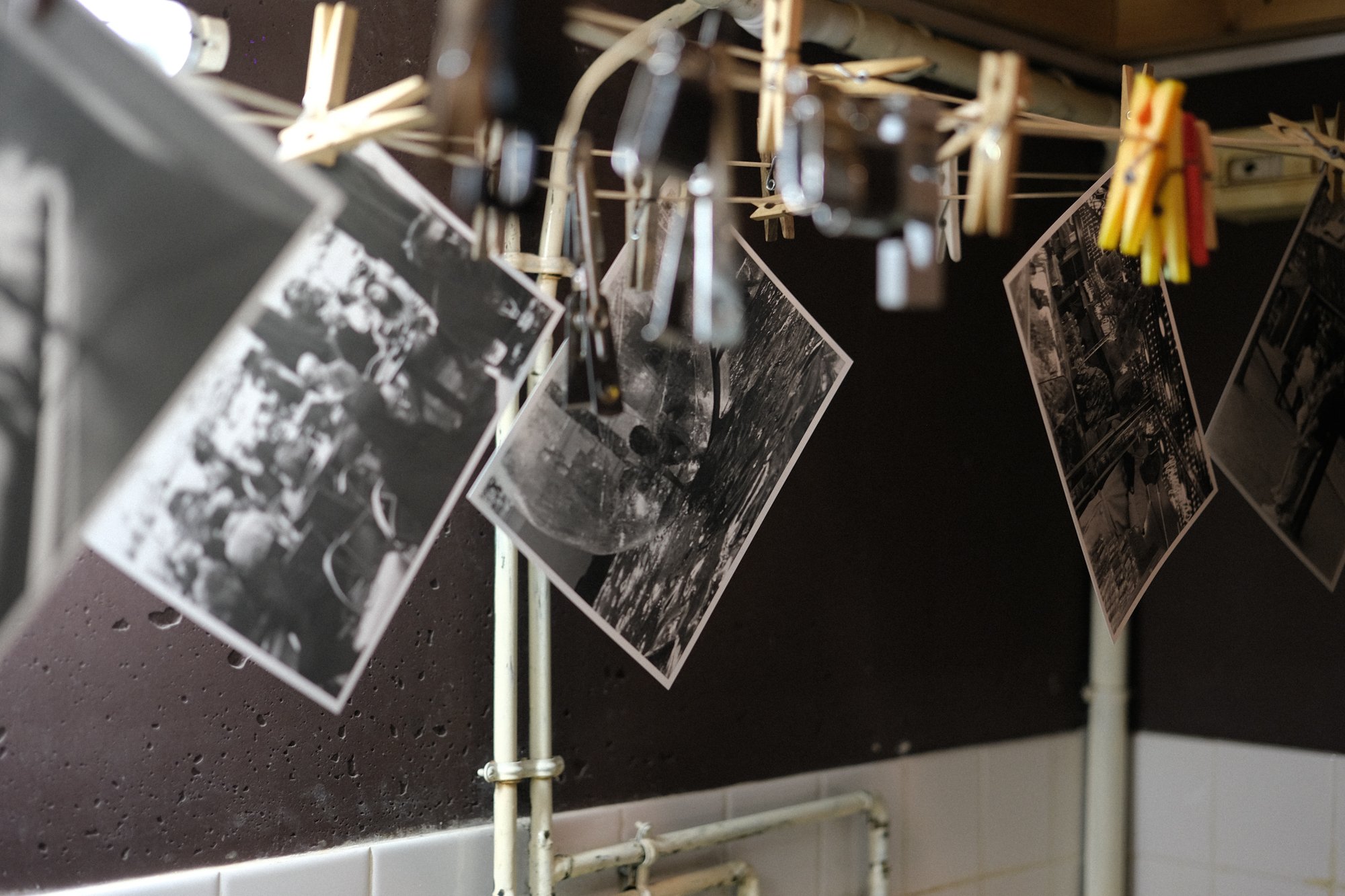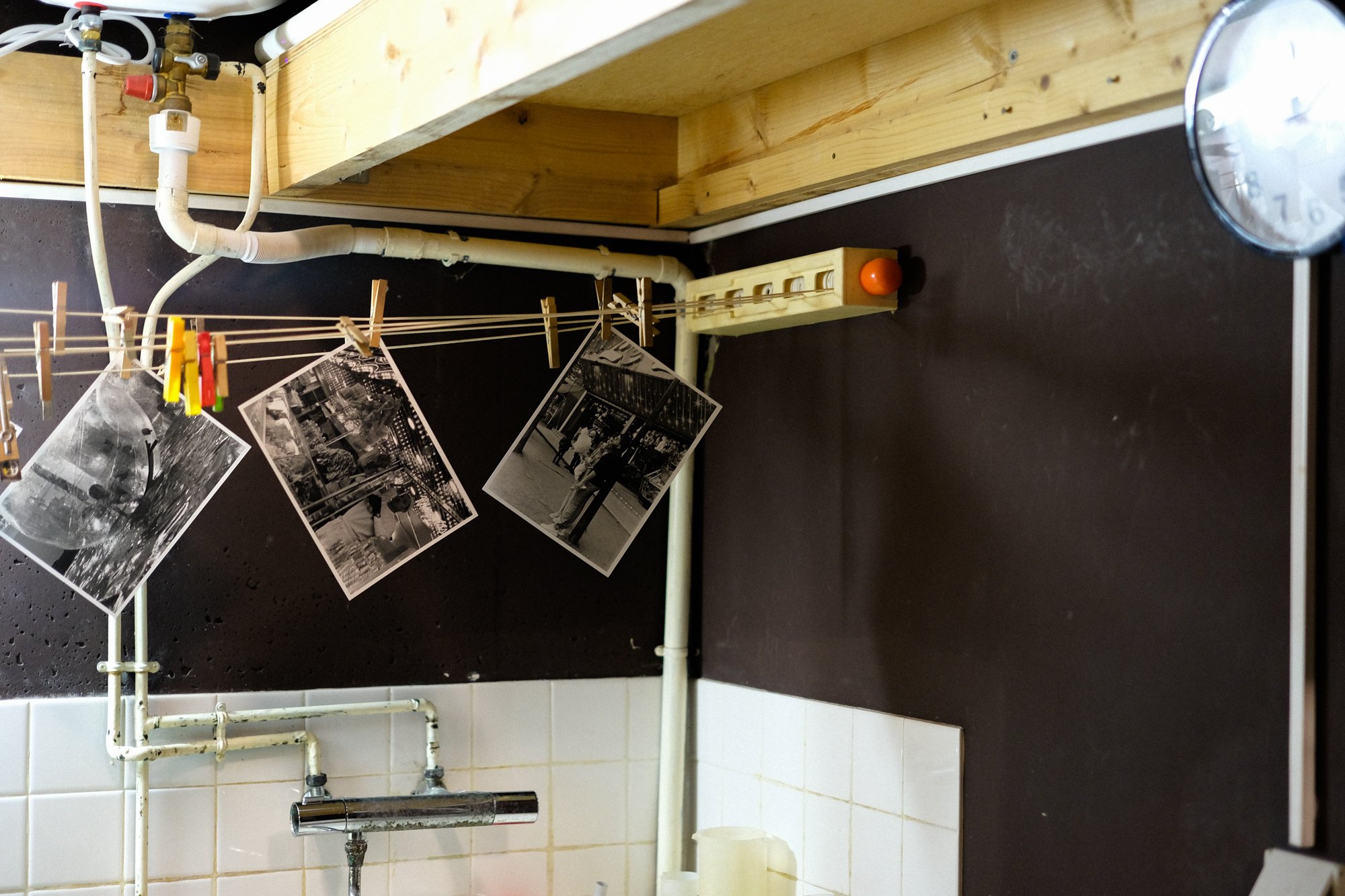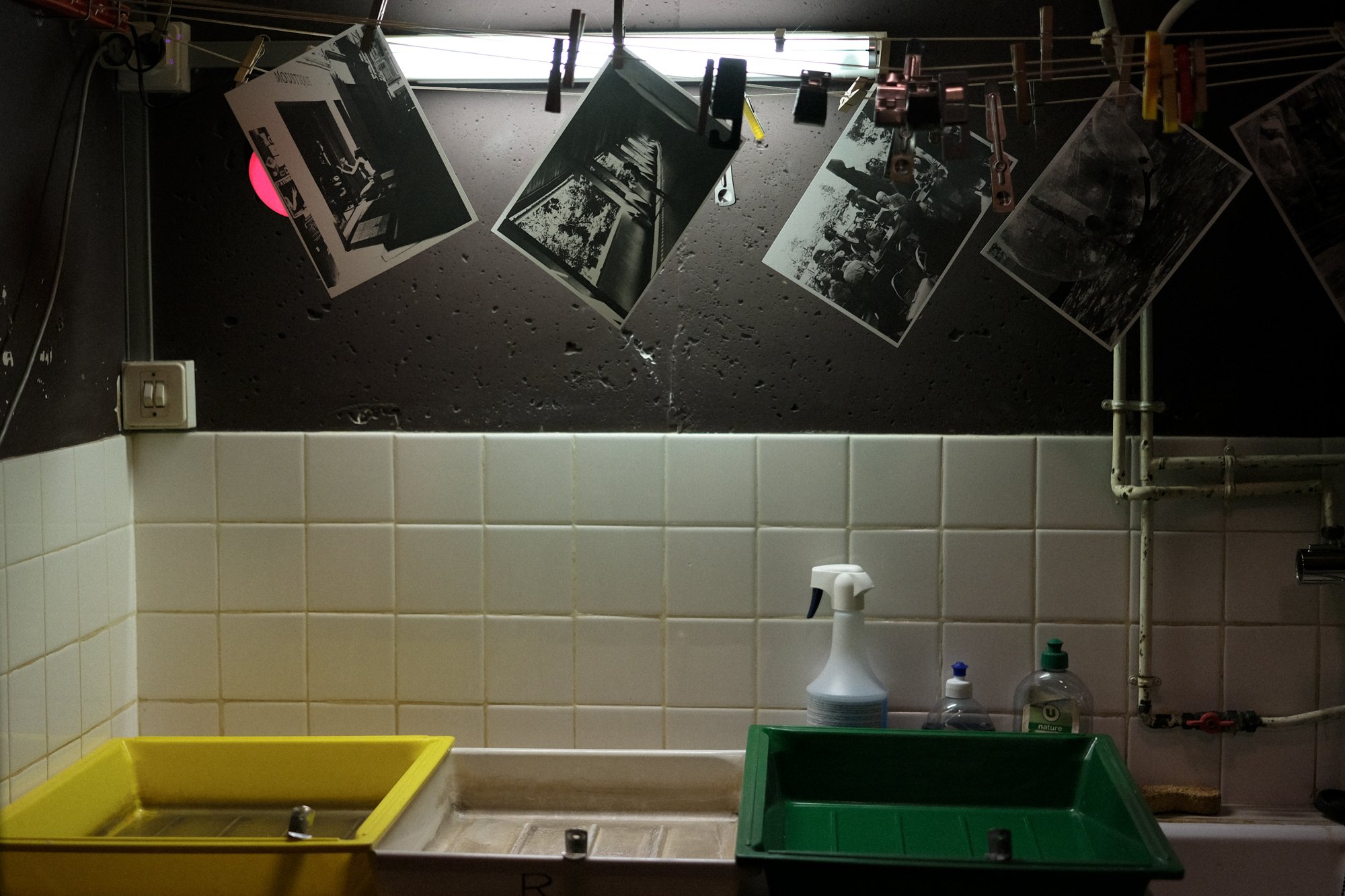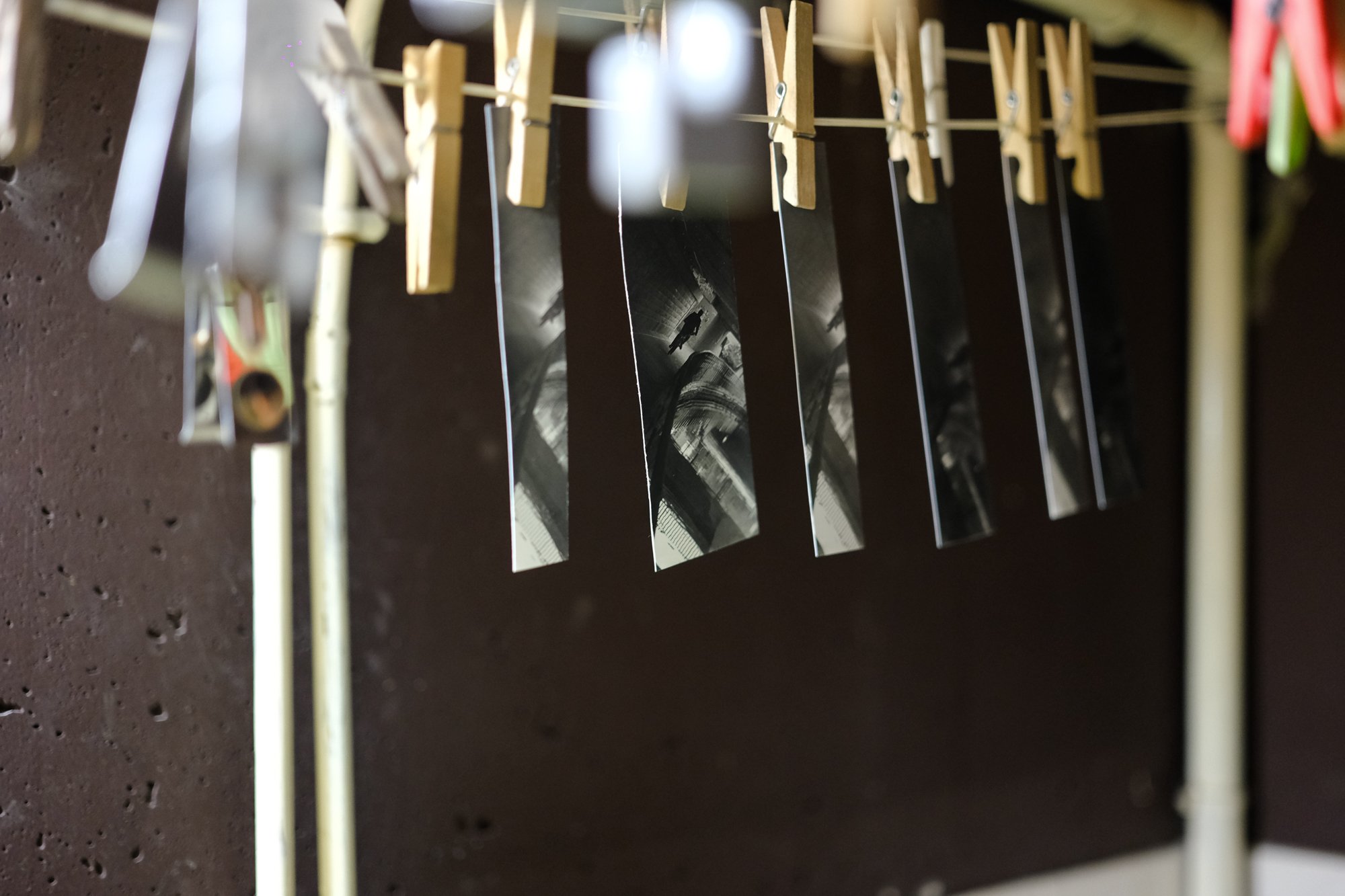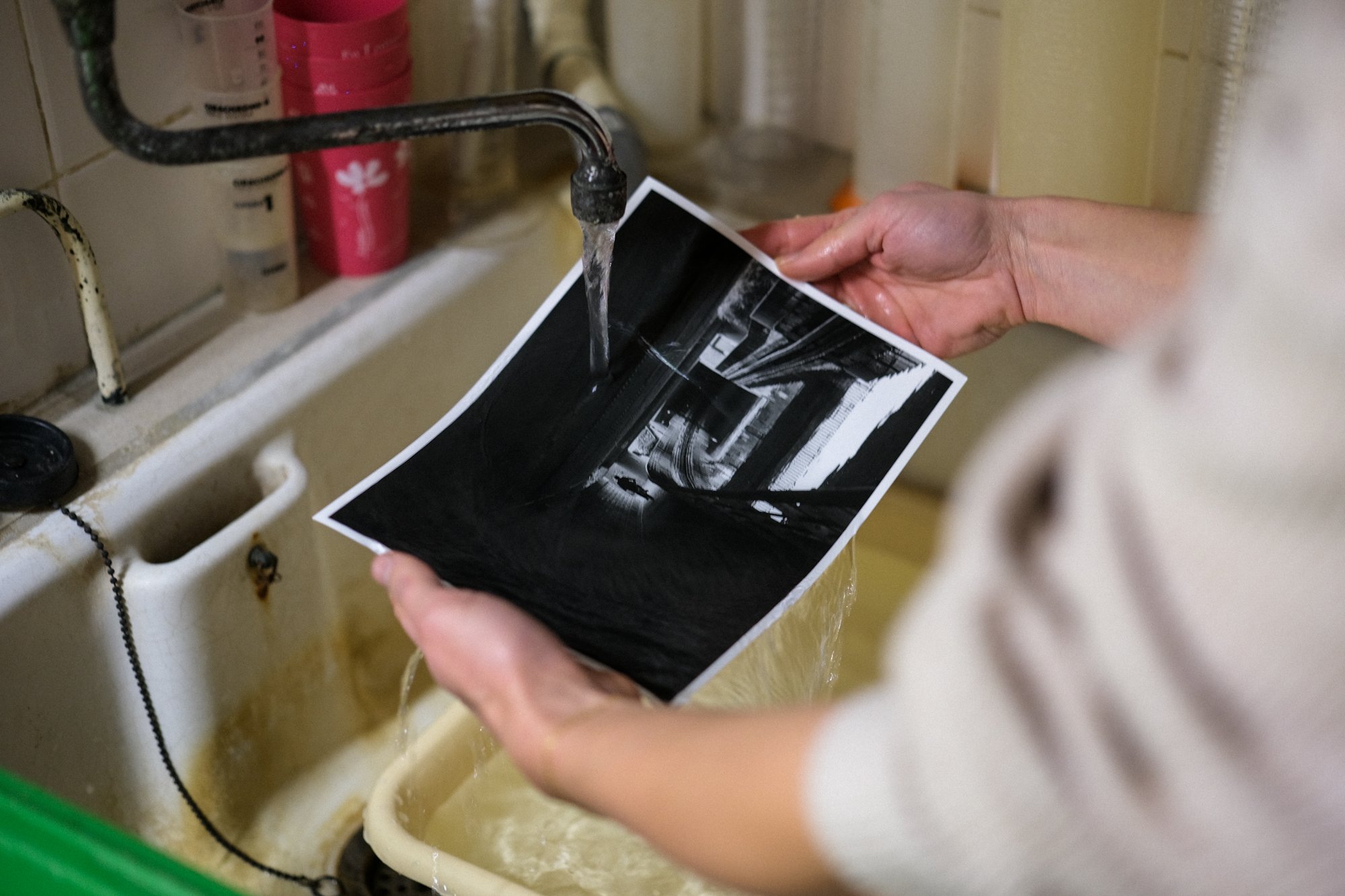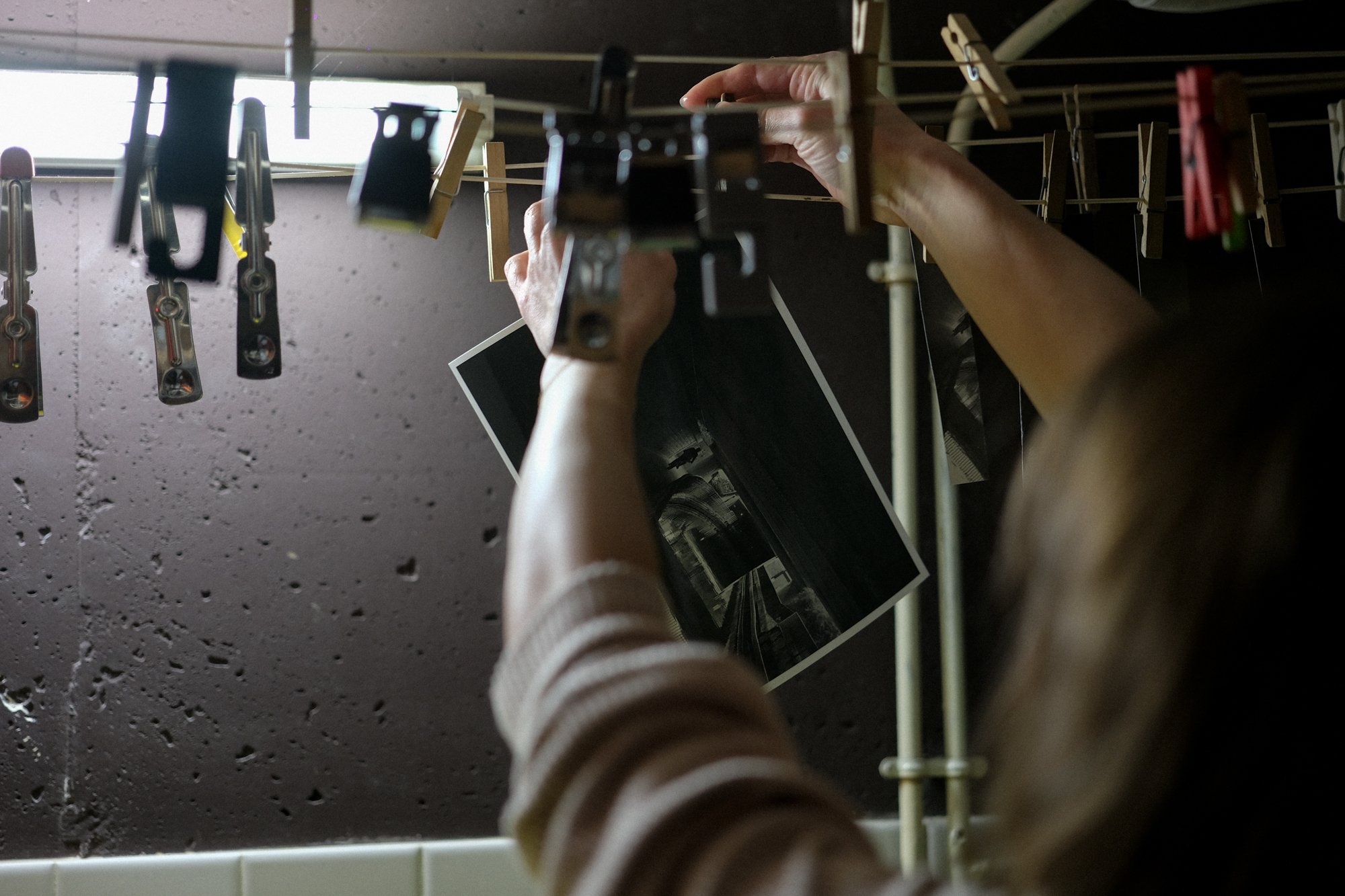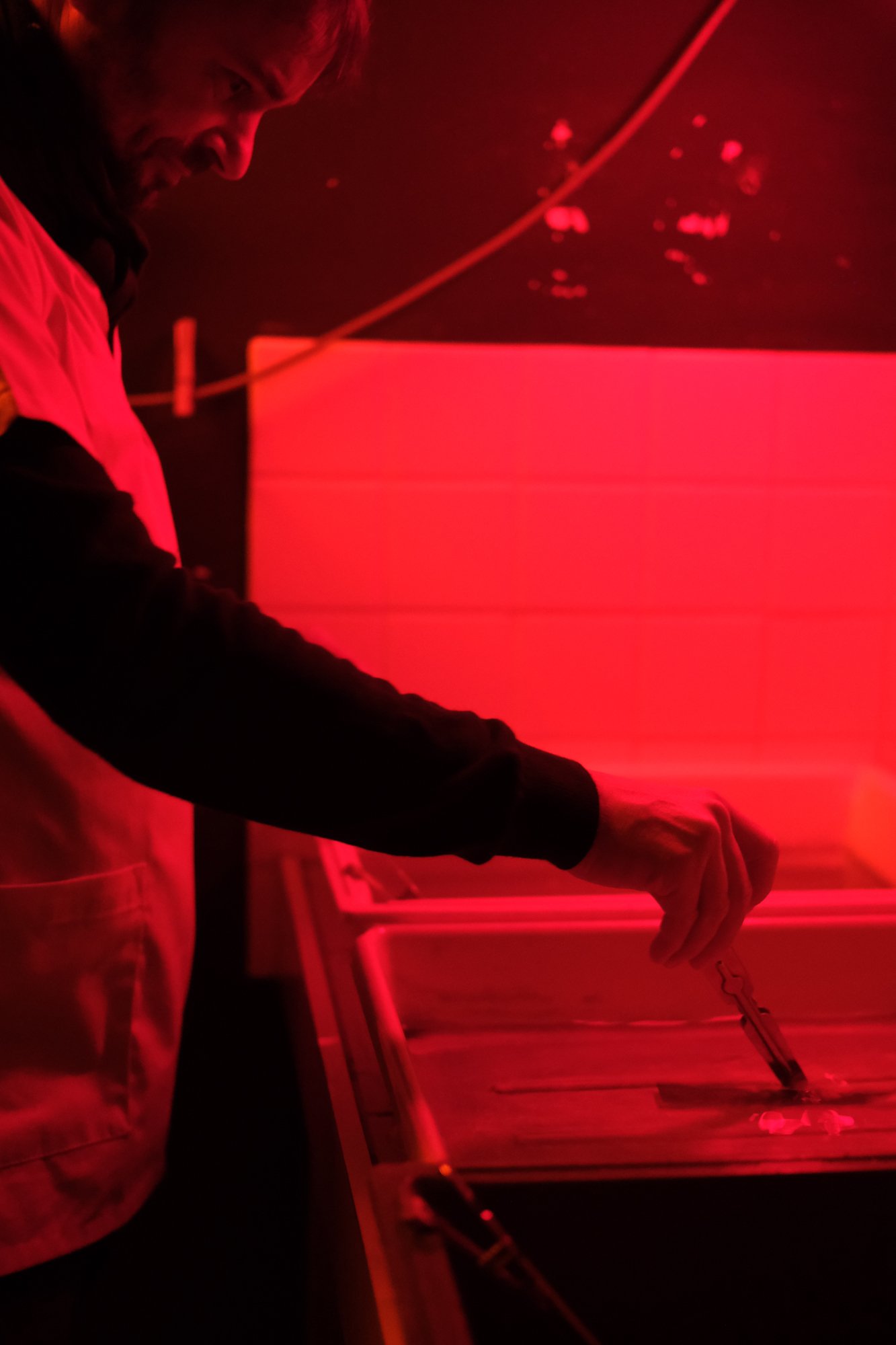Taking my time
with films
by Aurélien Bomy
Since April 2022, I’m back to analogue photography.
At that time, I asked my father for his old camera: A Minolta XD5 with a 50 mm / f1.7 fixed lens from 1979 (just one year younger than me). The camera he used when I was a child.
In my practice and in my production I have a rather precise taste for a certain form of aesthetics, ambience, or atmosphere that I would like to be able to approach and I shoot a lot at night. I find inspiration in many photographers’ work and in many movies.
I had already noticed the inimitable rendering of certain films, especially for night shots and cold or neon lights. In particular the Cinestill 800 T (made with Tungsten) which produces all those red halos around the white artificial lights.
So I already knew I had to move in that direction and when my father gave me his Minolta, I engaged in an analogue street photo practice.
At the very beginning, I was a bit impressed and I was afraid that the pictures would be messed up as the films cost a bit of money (between six and twenty Euros for a roll of Thirty-six exposures in 135 format, on average of 10 Euros). But very quickly, after I developed my first roll, I felt much more comfortable and I took a liking to this practice. I then shot almost frantically during the early days to learn and familiarise myself with the camera.
I love to test the renditions of the different B&W or colour films.
Some of my favourite films, for the moment, are the Cinestill 800 T, the Kodak Vision 3 500 T and the Kodak Portra 400 for colour, and the Ilford HP5 Plus 400 and Washi S 50 for B&W.
At the moment I am particularly fascinated by film photography because of its texture, its grain, its materiality, its substance and I am looking to experiment with new films to discover their rendering!
I’d like to test the Kodak Gold for colour and Kodak Tri X for B&W and many other films. But some films are hard to find, out of stock or even not produced anymore.
I learn a lot with analogue photography. What I learn from this is useful for both analogue and digital, as I also continue to take digital photos.
In B&W, I develop films and make the prints myself with a close friend. For colour, I ask for a professional lab.
My practice is also changing, as it is a less immediate process where you don't know the result right away, you learn to be less sure of yourself and also to trust yourself without certainty, without the possibility of checking. It's a very different relationship to time. And as the films and the process cost a bit of money, we apply ourselves more to the placement, the composition and the adjustments before releasing the shutter.
For digital, I choose colour or B&W in post-production. It is the composition and the intensity of the photo that will make me decide, depending on what I want to say. Sometimes it is because a series is more coherent this way that I decide to switch to B&W. For analogue photography, it is very different. I don’t do any post-processing. The choice (of Color/BW and of sensitivity/ film speed) has to be made beforehand when you decide which film to load into the camera. So you don’t load a 50 or 100 ASA for the night and conversely not an 800 ASA for the daytime. It is therefore also necessary to plan the type of photos to be taken according to the film.
The best would be to have two cameras; One loaded with colour and the other with B&W or with two different film speeds to be able to shoot in different conditions!
Thus, I learn that if on one hand, one must learn to use the camera, on the other hand, one must also learn not to use it! Not to take it out, or even to decide not to take it and to allow yourself time when you are not going to photograph (this is often when you regret not having taken it! but never mind! The photos we never took will continue to exist in us and will guide us the next time).
Knowing how not to use it is also a way of specifying one's choices, intention and position, a point of view!
My objective is to continue to learn, discover and create images with a certain freedom, according to the encounters I can make. This approach implies allowing the unexpected, the unforeseen, and the surprise. It is also a question of not foreseeing too much, and not programming too much.
So I say to myself « Be patient! Take your time! There is always something to learn! »
To be continued…
Here are some of the photos I took with the different films :
BW
- Ilford HP5 plus 400:
- Foma Pan 100:
- Washi S 50 (unfortunatly this film with hight contrasts won’t be produced anymore):
Color
- Kodak Portra 400 (The finest grain film with great color grading)
- Kodak Pro Image 100
- Kodak Vision 3 - 500 T (500 ASA Tungsten 135 film used in cinema movies, reels reconditioned in 36 exp. Rolls, developpement with a special chimical process ECN-2)
- Cinestill 800 T (Tungsten film)
And now a few photos of the Bw printing work at the lab
